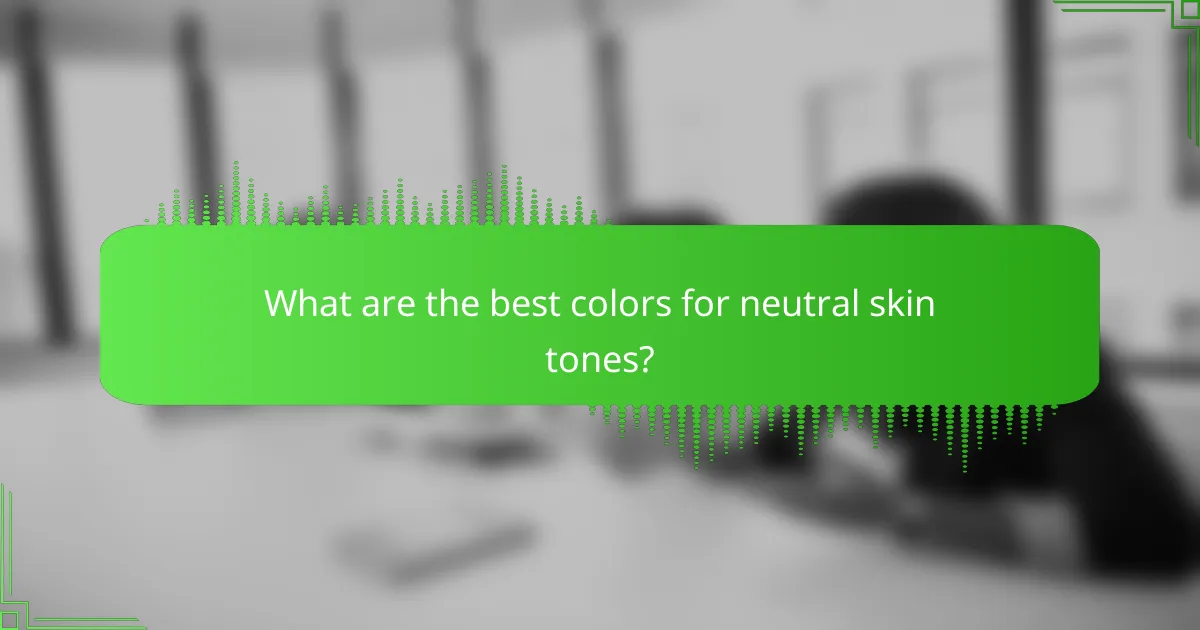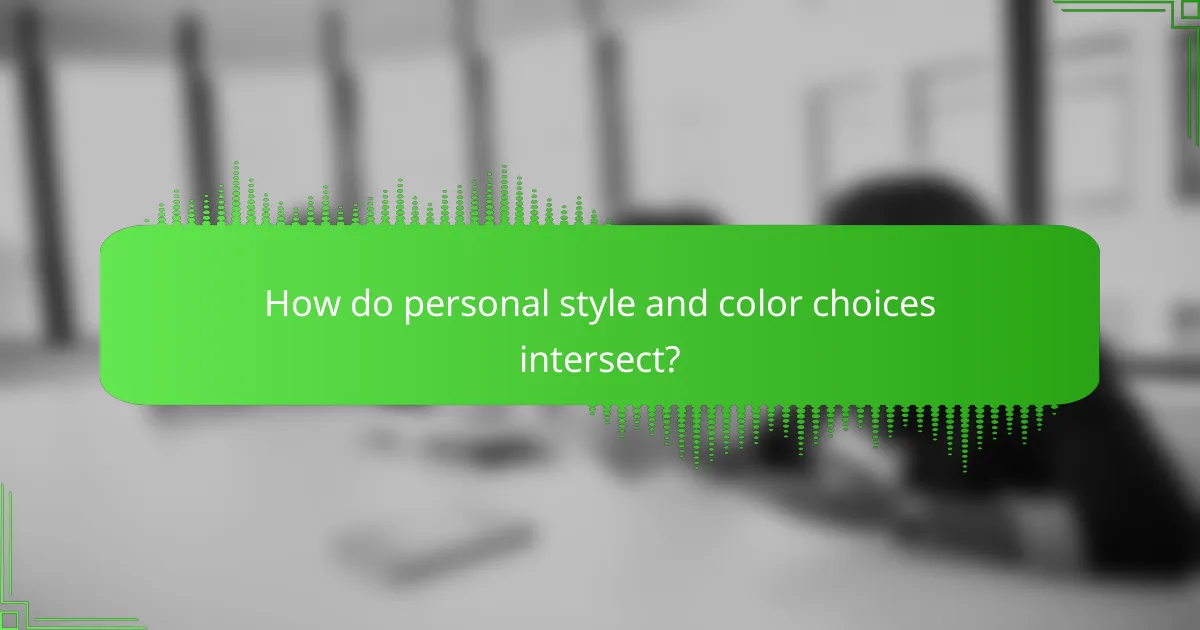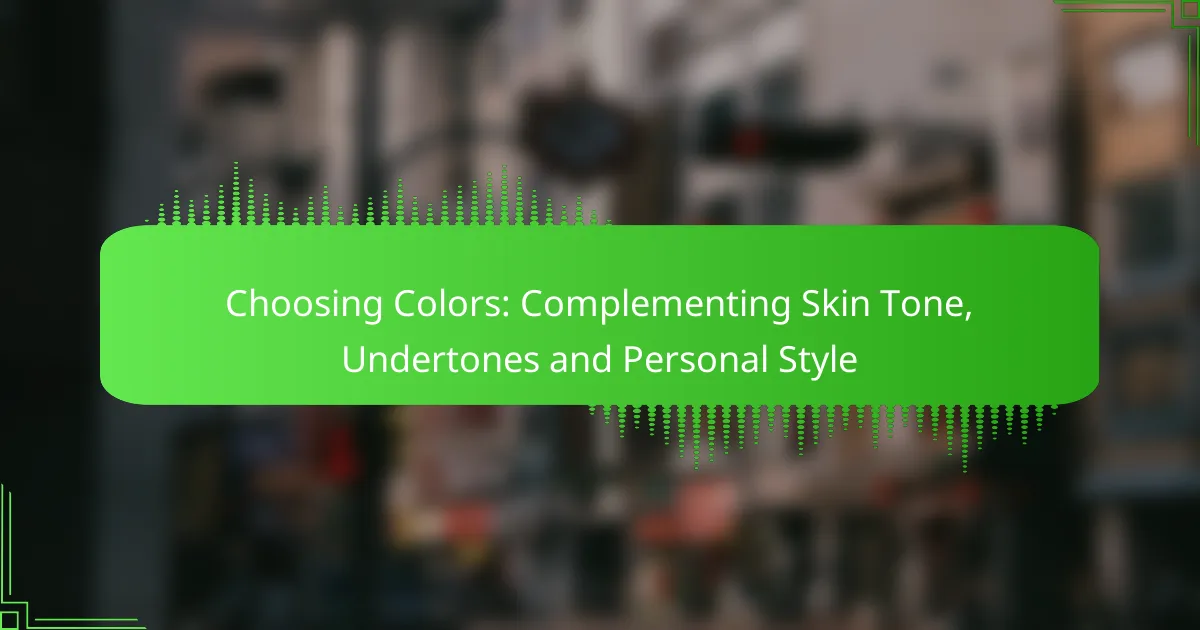Choosing the right colors for your wardrobe and makeup can significantly enhance your natural beauty, especially when you consider your skin tone and undertones. Warm skin tones thrive with shades that have yellow, peach, or golden undertones, while cool skin tones are best complemented by colors featuring blue or pink undertones. Understanding your unique undertone—whether warm, cool, or neutral—will guide you in selecting hues that create a harmonious and flattering appearance.

What colors complement warm skin tones?
Colors that complement warm skin tones typically include those with yellow, peach, or golden undertones. These shades enhance the natural warmth of the skin, creating a harmonious and flattering appearance.
Earthy tones like terracotta
Earthy tones, particularly terracotta, are excellent choices for warm skin tones. These colors evoke a natural, grounded feel and can add depth to your wardrobe. Pair terracotta with neutral shades for a balanced look.
Consider incorporating terracotta in various clothing items, such as tops, skirts, or accessories. This versatile color works well in both casual and formal settings, making it a staple for any wardrobe.
Warm shades of red and orange
Warm shades of red and orange, such as coral and rust, are vibrant options for those with warm skin tones. These colors not only brighten your appearance but also reflect the warmth of your complexion.
When selecting red or orange hues, aim for those with a golden undertone. This will ensure that the colors enhance rather than clash with your skin tone. Use these shades for statement pieces or accents in your outfits.
Golden yellows and olive greens
Golden yellows and olive greens are perfect for complementing warm skin tones. Golden yellows bring out the warmth in your complexion, while olive greens provide a subtle contrast that still feels cohesive.
Incorporate golden yellows in your tops or dresses, and use olive greens in bottoms or outerwear. These colors can be mixed and matched to create a variety of stylish outfits suitable for different occasions.

What colors complement cool skin tones?
Colors that complement cool skin tones typically feature blue or pink undertones. These shades enhance the natural complexion, creating a harmonious look that feels balanced and vibrant.
Jewel tones like emerald and sapphire
Jewel tones are rich, vibrant colors that work exceptionally well with cool skin tones. Shades like emerald green and sapphire blue provide a striking contrast that highlights the skin’s natural glow. When choosing outfits or accessories, consider these colors for formal occasions or evening wear.
In addition to emerald and sapphire, other jewel tones such as amethyst and ruby can also be flattering. These colors add depth and sophistication to your wardrobe, making them versatile choices for various styles.
Cool shades of blue and purple
Cool shades of blue and purple, such as navy and lavender, are excellent options for those with cool skin tones. These colors create a calming effect and can be easily incorporated into both casual and professional attire. Pairing a navy blouse with gray trousers, for instance, can create a polished look.
When selecting purple, opt for shades like periwinkle or deep violet, which enhance the cool undertones in your skin. These colors can be used in everything from clothing to makeup, ensuring a cohesive appearance.
Soft pastels like lavender and mint
Soft pastels, including lavender and mint, are ideal for adding a gentle touch to your wardrobe. These colors are light and airy, making them perfect for spring and summer outfits. A lavender sundress or mint cardigan can provide a fresh, youthful vibe.
When wearing pastels, consider balancing them with neutral tones to avoid overwhelming your look. Pairing a soft pastel top with white or gray bottoms can create a chic, understated outfit that complements your cool skin tone beautifully.

How to identify your skin undertone?
Identifying your skin undertone is essential for choosing colors that enhance your natural beauty. Undertones can be broadly categorized into warm, cool, and neutral, and recognizing yours will help you select clothing and makeup that complement your complexion.
Vein color test
The vein color test is a simple method to determine your undertone. Look at the veins on the inside of your wrist under natural light. If your veins appear blue or purple, you likely have a cool undertone. If they look greenish, you probably have a warm undertone. A mix of both colors suggests a neutral undertone.
Keep in mind that lighting can affect how your veins appear, so it’s best to perform this test in natural daylight for the most accurate results.
Jewelry test
The jewelry test helps you assess your undertone based on how different metals look against your skin. If gold jewelry enhances your complexion, you likely have a warm undertone. Conversely, if silver jewelry looks better, you may have a cool undertone. If both gold and silver suit you equally well, you might have a neutral undertone.
When trying this test, wear the jewelry for a while to see how it interacts with your skin tone throughout the day.
White paper test
The white paper test involves holding a piece of white paper next to your face in natural light. Observe how your skin reacts to the stark contrast. If your skin appears more yellow or golden next to the paper, you have a warm undertone. If your skin looks pink or rosy, you have a cool undertone. If you see a balance of both, you likely have a neutral undertone.
This test is straightforward and can be done anywhere, making it a convenient option for identifying your undertone quickly.

What are the best colors for neutral skin tones?
For neutral skin tones, the best colors are those that balance both warm and cool undertones, allowing for versatility in wardrobe choices. Shades that complement neutral skin tones often include muted tones and universally flattering colors.
Balanced shades like taupe
Taupe is an excellent choice for neutral skin tones as it combines both warm and cool elements, making it a versatile option. This color can be worn in various contexts, from casual to formal, and pairs well with many other shades.
When selecting taupe clothing, consider variations that lean slightly warmer or cooler based on your personal style. This flexibility allows you to create outfits that feel harmonious and stylish.
Universal colors like blush and navy
Blush and navy are considered universal colors that work well with neutral skin tones. Blush adds a soft, feminine touch, while navy provides a classic, sophisticated look that is suitable for various occasions.
Incorporating these colors into your wardrobe can enhance your overall appearance. For instance, a blush top can be paired with navy trousers for a balanced outfit that flatters your skin tone.
Soft whites and grays
Soft whites and grays are ideal for neutral skin tones, offering a clean and understated aesthetic. These colors can serve as a perfect backdrop for bolder accessories or patterns, allowing for a balanced look.
When choosing whites and grays, opt for shades that are not too stark or dark, as these can wash out your complexion. Instead, look for creamy whites and light grays that enhance your natural glow.

How do personal style and color choices intersect?
Personal style and color choices are closely linked, as the colors you choose can enhance your overall aesthetic and express your individuality. Understanding how to align your color palette with your style preferences can significantly impact your confidence and how others perceive you.
Understanding color psychology
Color psychology explores how different colors evoke emotions and influence perceptions. For example, warm colors like red and orange can create feelings of excitement and energy, while cool colors like blue and green tend to promote calmness and tranquility. Recognizing these associations can help you select colors that resonate with your desired mood or message.
When choosing colors, consider how they make you feel and how you want to be perceived. For instance, if you want to project confidence, you might opt for bold colors, while softer shades could convey approachability.
Aligning colors with fashion preferences
Your fashion preferences play a crucial role in determining which colors will complement your style. If you gravitate towards classic styles, neutral colors like black, white, and gray may be your go-to choices. In contrast, those who favor eclectic or bohemian styles might enjoy vibrant colors and patterns.
To find your ideal color palette, assess your wardrobe and identify the colors you wear most often. This can guide you in selecting new pieces that align with your existing style while ensuring a cohesive look.
Influence of cultural backgrounds
Cultural backgrounds significantly shape color preferences and meanings. Different cultures associate various colors with specific emotions, traditions, and symbolism. For example, in many Western cultures, white is often linked to purity and weddings, while in some Eastern cultures, it may symbolize mourning.
When choosing colors, consider your cultural heritage and how it influences your style. Embracing colors that resonate with your background can enhance your personal expression and create a deeper connection to your wardrobe choices.

What are the latest trends in color palettes for 2024?
In 2024, color palettes are leaning towards vibrant hues and soft pastels, reflecting a blend of boldness and subtlety. This year emphasizes personal expression through color, encouraging individuals to choose shades that resonate with their skin tones and personal styles.
Pastel color resurgence
The resurgence of pastel colors in 2024 highlights their versatility and appeal across various fashion and design sectors. Soft shades like lavender, mint green, and baby blue are making a comeback, offering a fresh and calming aesthetic that complements a wide range of skin tones.
When incorporating pastels, consider pairing them with neutral tones for balance or layering different pastel shades for a harmonious look. For instance, a pastel pink blouse can be paired with beige trousers, creating a soft yet stylish outfit suitable for both casual and semi-formal occasions.
To effectively use pastels, focus on the undertones that best suit your skin. Warmer skin tones often look great in peachy or coral pastels, while cooler tones can shine in shades like icy blue or soft lavender. Experimenting with different combinations can help you discover what works best for your personal style.
